Once you’ve bought a suitable frame, a quality set of wheels is one of the most important components of a touring bike.
A pair of robust yet comfort-oriented wheels will make a significant difference to your ride. Provided they are built correctly, you shouldn’t have to worry about breaking a spoke and sending the wheel out of true on bikepacking trips.
In this guide, we will take you through the key features of touring wheels and what to look for, how they differ from road bike wheels or gravel wheels, the pros and cons of stock versus handbuilt wheels, and some options to consider.
We've also spoken to David CR Meadows, owner of DCR Wheels, Ryan Downes of RyanBuildsWheels and Robin Thorn, director of SJS Cycles to provide additional insight into the subject.
What is a touring wheel?

A touring wheel is typically heavier-duty than a road or gravel bike wheel because they're designed to withstand larger loads and be reliable over long distances.
They should require less maintenance because they're not designed for out-and-out speed. They will typically have rims constructed from aluminium, rather than carbon fibre.
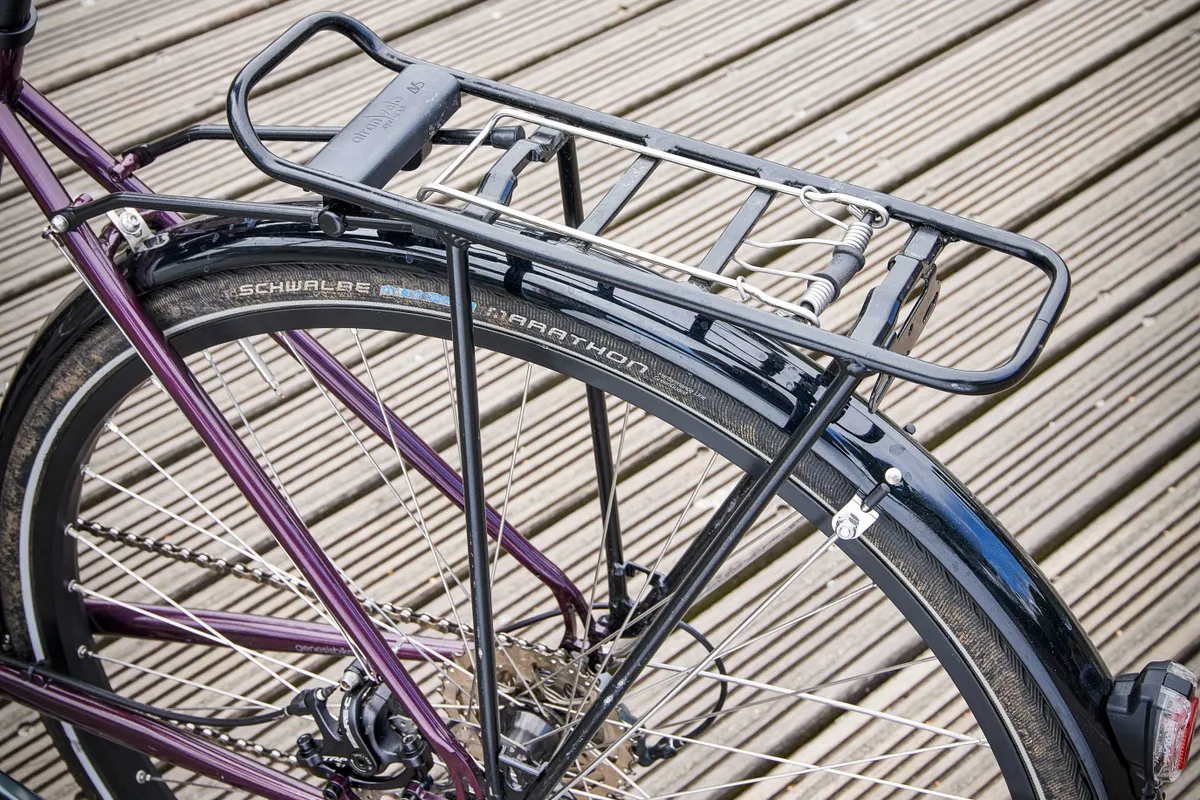
Downes succinctly summarises a touring wheel as “something that will carry you and all of your gear”.
You can buy a touring wheel off-the-shelf, but heading down the hand-built route is a popular option. This is because you can customise the exact rim, spoke and hub combinations to suit your riding weight and specific requirements. We’ll explore the topic of hand-built wheels in depth later in the guide.
What to look for in touring wheels
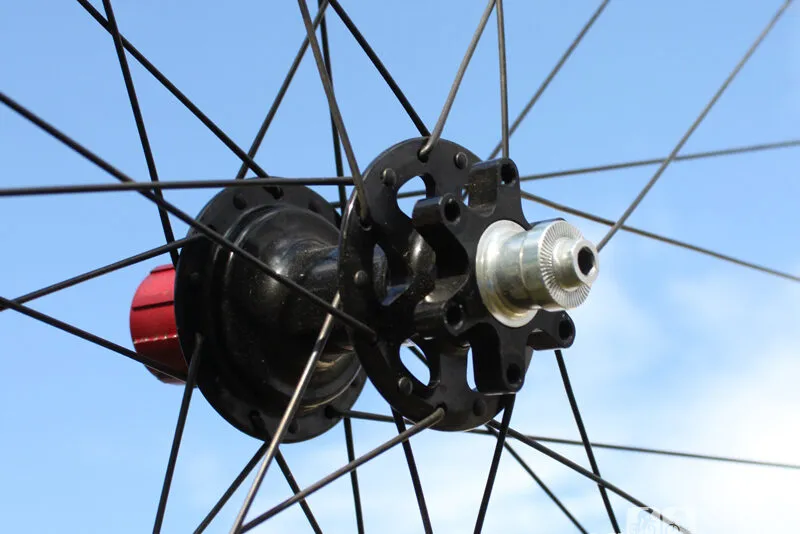
There are effectively four components that hold your wheel together – the rim, spokes, nipples and hub.
Both Downes and Thorn say the two primary aspects to look for in a touring wheel are “strength and durability”.
Here, we’ll explain what to look for in each component.
Touring rims explained
Most touring bike wheels are built around chunkier box-section rims. These are often double walled with double eyelets. An eyelet is an aluminium sleeve that reinforces the spoke holes.
Double eyelets help spread the load across the rim and the thicker sidewalls should mean better durability.
Touring rims are typically wider, both internally and externally, for additional comfort. Wider internal rim widths tend to increase effective tyre volume.
You can buy rims that are suitable for use off-road, should you want to wander off the beaten track.
The wider the rim, though, the higher the weight, so consider the terrain you're going to be riding in carefully.
Downes advises considering what width of tyre you would like to run and matching the rim with your tyre choice.
For example, if you wanted to run 700c x 28mm road tyres, that would be best paired with a 20mm internal-width rim.
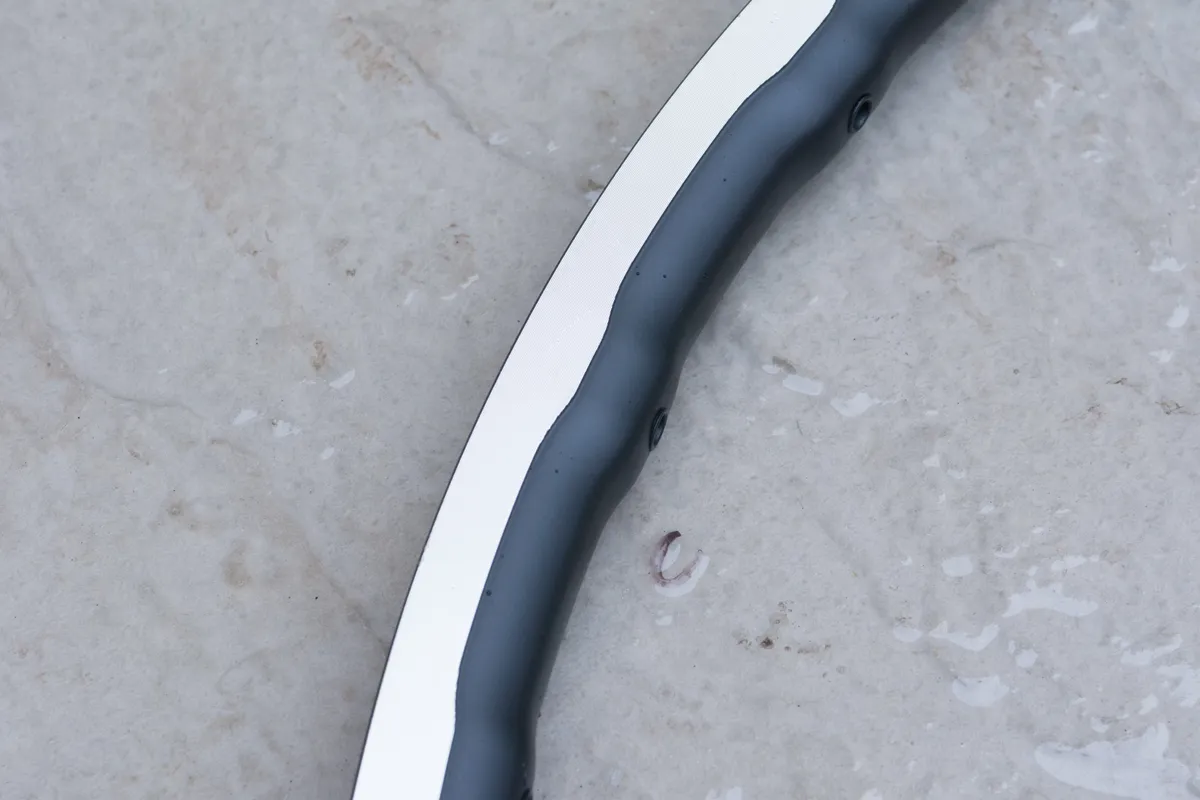
Meadows advises checking the wall thickness of the rim if it is a rim-brake wheelset. He adds that some road wheelsets designed for rim brakes can have a wall thickness as low as 1.1mm to save weight.
In contrast, some rim-brake rims can be as thick as 2.5mm, which adds weight and durability.
Downes doesn’t like building on rims that measure less than 1.8mm in wall thickness because "you’re simply looking for a thicker rim for touring purposes that has more braking material to account for the wear over time”.
You should also consider whether you would like to run tubeless tyres or if you’ll be sticking to clincher tyres, because the rim will determine compatibility.
Meadows says tubeless tyres are unpopular with his customers because the tyres can be harder to install or remove. That said, the sealant can help prevent punctures, so you shouldn’t need to remove or re-install the tyre as often as a clincher.
Downes says he sees roughly a 50-50 split between tubeless and clinchers, whereas SJS does not collate these figures.
Bear in mind that fitting tubeless tyres often decreases a wheel’s spoke tension, because they exert more force on the rim than an inner tube. It’s worth deciding if you are going down this route before the wheel is built to ensure it's built and tested with tubeless in mind.
Touring wheel spoke counts
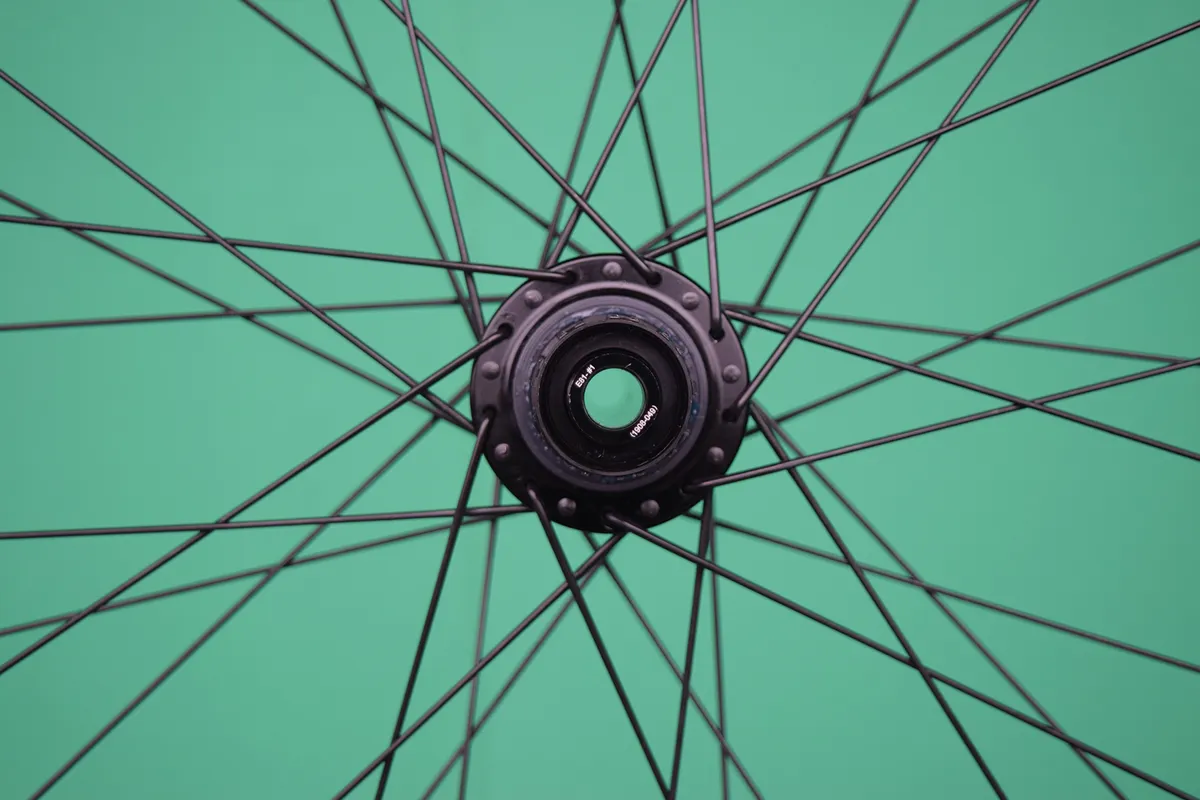
Most touring wheels use higher spoke counts for better rigidity and often use a three or four-cross lacing pattern.
A higher spoke count is preferable because if you were to break a spoke on a ride, there is a reduced chance of the wheel going significantly out of true, given there are more spokes to hold its structure.
This is corroborated by Thorn, who says that “it is easier to [achieve] a straight wheel” when truing and “32 holes gives the best chance of getting a replacement rim in the event of a misadventure”.
Meadows says the spoke count “should really be driven by the rider and luggage loading [weight]”, but would generally “advise 32 spokes”, although “36 and 28 are also common”.
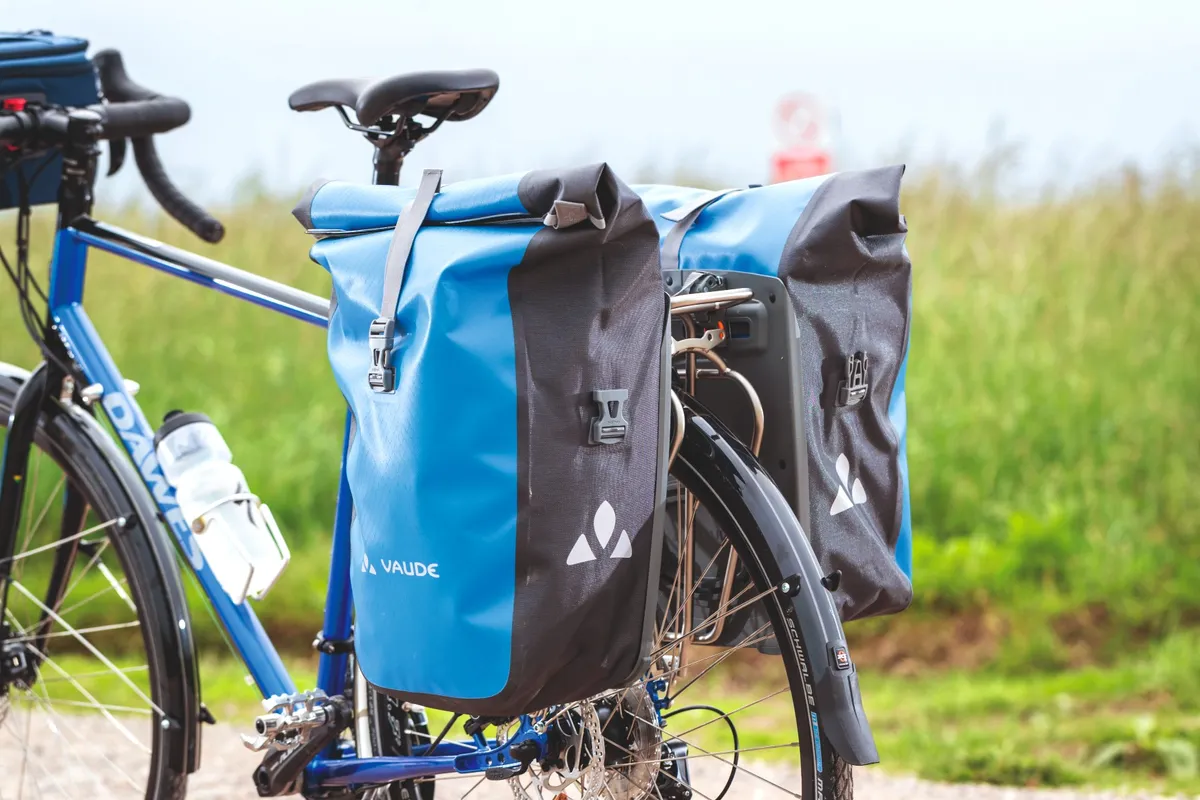
Meadows adds thicker spokes on the driveside is a popular option and that while some riders opt for plain gauge (the same thickness from one end to the other), he wouldn’t recommend them.
Some believe using a thicker driveside spoke helps to even spoke tension across the wheel, but Downes says this is a misconception and is just a reading on the tensiometer.
Downes generally echoes DCR’s recommendations on spoke count, although he believes thicker spokes on the driveside only offer a marginal gain because “while thicker spokes will result in a stiffer build, most riders may not notice this and generally speaking a superior butted spoke will have a longer fatigue life”.
He adds there is a stronger case to be made for thinner spokes on the non-driveside because they exist under more elongation and are less likely to fully de-tension, should the wheel take an impact, but it’s still a fairly minor detail in the grand scheme of things.

Brass nipples are generally used on all touring wheels, because they are more durable and corrosion-resistant than lightweight alloy nipples.
Meadows likes to use double square nipples, where the shape allows truing with a spoke wrench both internally and externally and the nipple surface doesn’t get scratched while truing internally. He advocates their use because they take the spoke further in and the slot is a weak point for a traditional nipple.
Downes believes that double-squared nipples offer a quicker build but doesn’t feel it’s necessary with brass. However, they can be really useful if using alloy nipples because they encourage more thread engagement.
On the subject of alloy nipples, Thorn advises against alloy nipples unless “all you intend to do is look at your bike (or weigh it)”. This is a sentiment shared by Meadows.
Downes is more positive but will only use Sapim alloy nipples, because they feature additional weather-proofing properties.
Front wheels generally have a lower spoke count than the rear because they carry less weight. It’s a good idea to consider what luggage you will be carrying and where on the bike, because you can opt for different spoke counts front and rear to suit your requirements.
Rim or disc brake for touring wheels
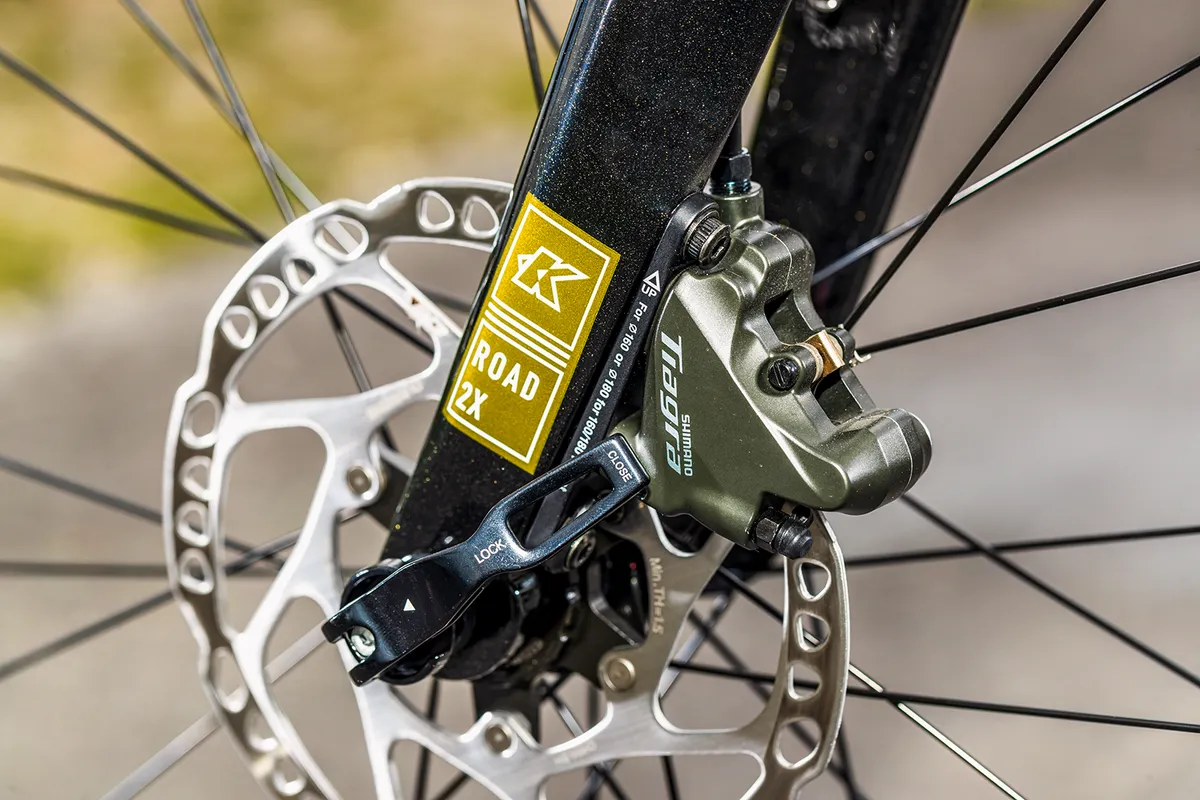
The type of brakes a touring wheel is designed around will be determined by your bike.
Rim brakes are a more traditional choice for touring bikes, offering solid braking in dry conditions, although they can suffer when it’s wet. They are easy to work on mechanically and it is usually easy to source a brake cable, should you suffer a breakage in the field.
Disc brakes allow for increased tyre clearances and the rim of the wheel is not being used as a braking surface. Hydraulic disc brakes (which use hydraulic brake fluid rather than a brake cable) offer more consistent braking and improved modulation (the feel of the brake) when stopping. They are now ubiquitous off-road.
Rim brakes once ruled the roost on the road, but the majority of road bikes and gravel bikes have now moved to disc brakes, too, and rim brakes are slowly and surely becoming seldom specced.
Touring bike hubs

Reliability is, again, the aim when deciding on hubs for your touring bike.
The first thing to consider is what type of bearings the hubs roll on. You will typically have a choice between cup-and-cone and sealed-cartridge bearings.
Cup-and-cone hubs can be adjusted and relatively easily serviced. If you have a problem in the middle of nowhere, you’re also not reliant on being able to source a proprietary-sized cartridge bearing that a bike shop is unlikely to stock. Cartridge bearings also need to be installed using a bearing press.
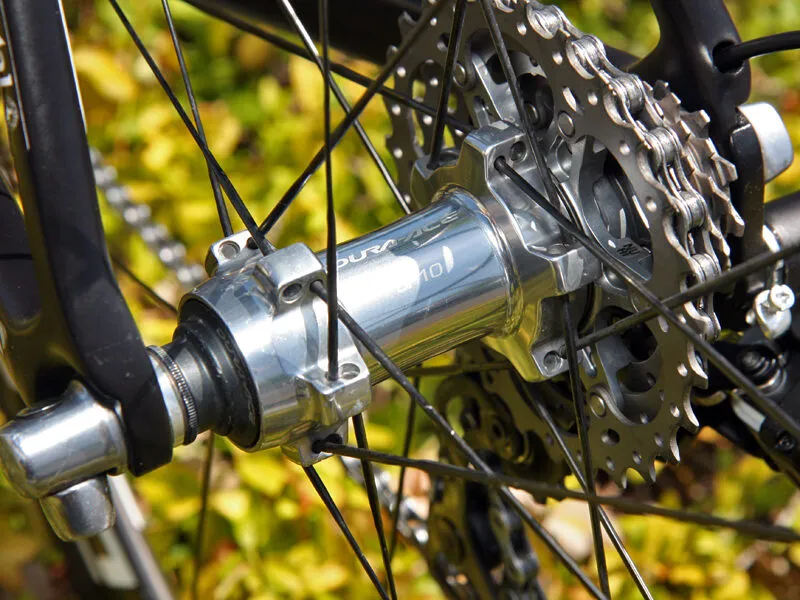
However, cup-and-cone bearings suffer under poor adjustment and, if not maintained, the cups and cones can get pitted over time.
Sealed-cartridge bearings do away with loose ball bearings and rely on cartridge bearings instead. There generally isn’t any adjustment possible, given they are installed into the frame using a bearing press.
However, on some hubs, you can adjust the preload. Sealed-cartridge bearings are a fit-and-forget item and should generally last a long time before they require replacement, provided the bearings are of good quality and are properly maintained.
It’s worth spending money on the hubs, because a good quality one can be rebuilt on a new rim once the braking surface wears out.
Downes advocates using sealed-cartridge bearings over cup-and-cone, saying: “you’re not going to find a Shimano cone in the middle of a desert, but you might find an automotive bearing.”
Freehubs
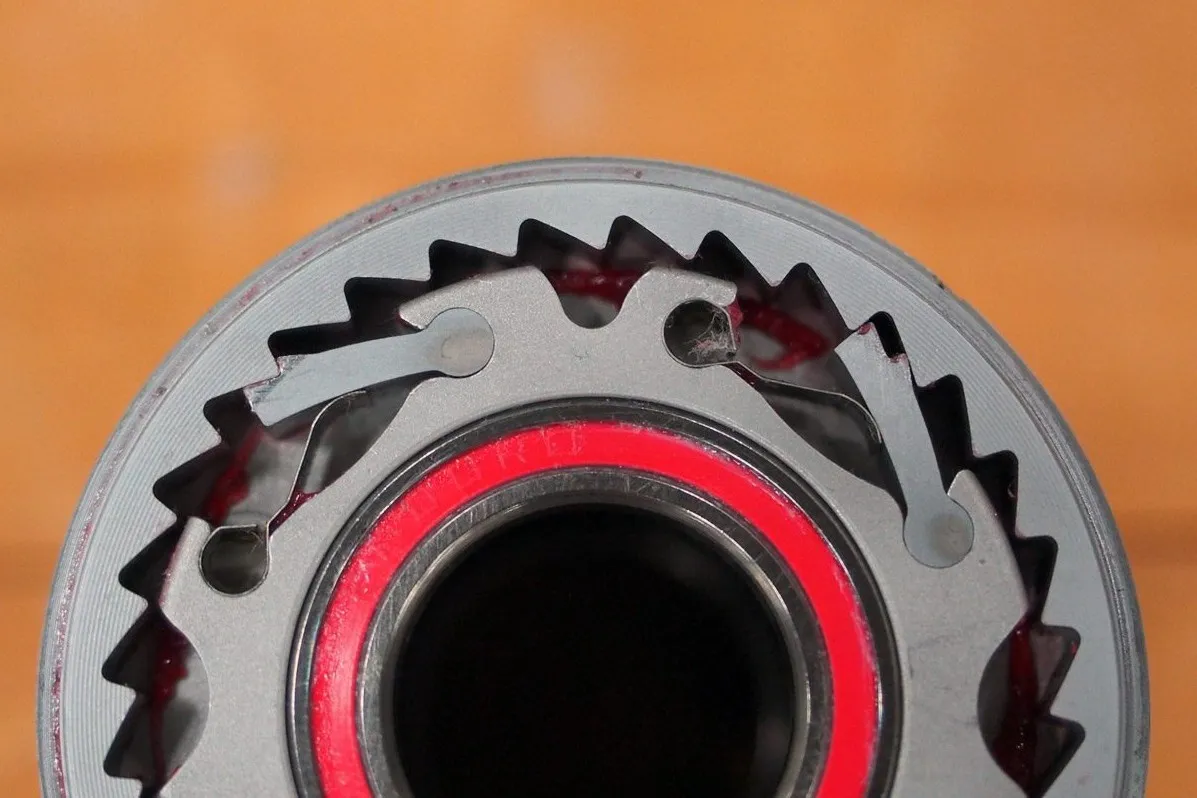
It’s also worth considering what groupset you are likely to ride on the bike so you can ensure that the freehub is compatible with it.
Downes prefers a steel freehub (as opposed to aluminium), because there's a reduced chance of the cassette biting into the body, as well as a lower risk of breaking the axle under full load if the hub features an increased bearing size. He adds regardless of the hub choice that a steel axle is the best choice because he has seen aluminium ones snap at machined junctions and "steel is a stronger material".
You should also consider how easy the hub and freehub are to service, should you get caught out on a tour. Some hubs rely on a pawl-and-spring system, whereas others use ratchets.
Dynamo hubs

You may want to consider a dynamo hub, which offers you the opportunity to charge devices and/or run lighting while riding. We have a full guide to bike dynamos that takes you through all the details.
Touring wheels vs road and gravel wheels – the differences explained
Touring wheels are typically intended to be harder-wearing and designed for pure reliability over road and gravel wheels.
However, it isn’t easy to differentiate between the two and, technically, a touring wheel designed for the road could equally be classified as a ‘road’ or ‘gravel’ wheel.
Thorn argues there are no differences, other than touring wheels are more focused on “endurance and less about performance”.
It’s a sentiment mostly shared by DCR, who says “the most important thing in any pair of wheels is that it fits the bike”, but concedes that a touring bike will “generally have wheels which are confused about being tough and durable”.
Custom or stock?
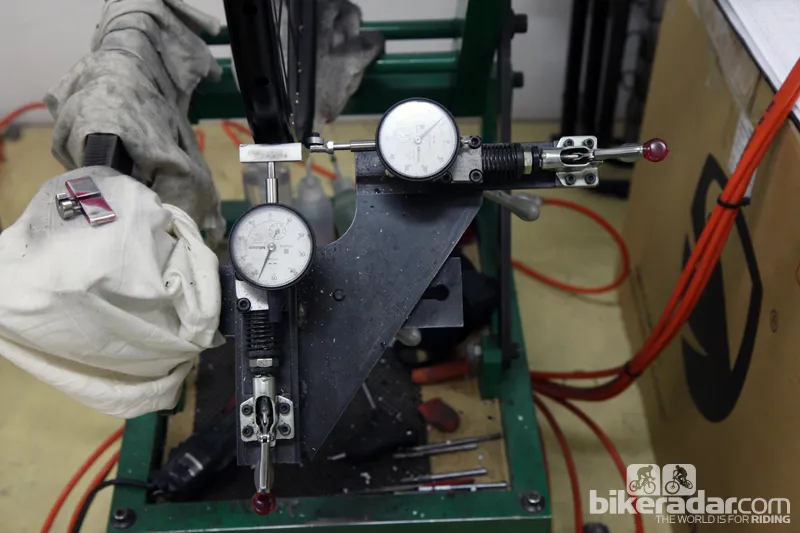
You can very easily buy a set of touring wheels off-the-peg, but there is a strong case to be made for ordering custom touring wheels to suit your needs. Specific wheel-building specialists, such as DCR Wheels or RyanBuildsWheels, exist for this purpose.
Hand-built wheels are customised to your personal needs and are built to your riding conditions and weight. Some argue there's greater quality control over the process, too, such as tensioning and truing by hand rather than by machine, as well as correct preparation of the spoke thread interfaces.
They can potentially be more durable too, given they have been custom built to your requirements. In contrast, stock wheels need to cater to the largest possible audience and may not suit your needs as precisely.
Should I build my own wheels?

Unless you know what you’re doing, Thorn advises against building your own pair of wheels. He says that if you want to give wheel building a try, “your build should be something cheap” and you should “practise, practise, practise”.
He adds: “the components play a big part [in the wheel’s performance], but so does the wheel builder… use a professional!”
Meadows’ view isn’t as strong, but he notes there are many areas where home builders go wrong. He advises to use the correct length of spoke and double-squared nipples, ensure spoke tensions are even and to “stress the wheels… [repeatedly] until they settle”.
Downes is significantly more optimistic and encourages riders to learn the science of wheel building. He advises to “go [for] brass [spokes] if you’re building for the first time and lubricate the spokes and nipples”. He also recommends using “some form of tensiometer” but also to take time and enjoy the process, and crucially “never work without a cup of tea”.
If you do fancy giving it a go, check out our guide to lacing wheels.
Eight touring wheelsets to consider
Here are some touring wheels to run the rule over if you're in the market for a new set.
Factotum Endurance Disc
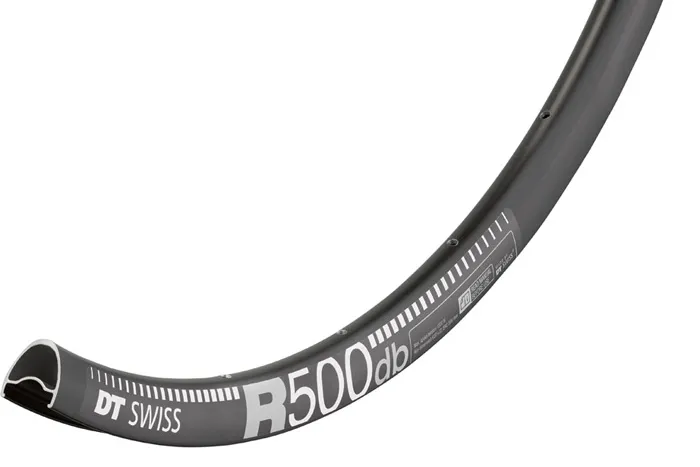
The Factotum Endurance Disc is a performance-focused tubeless-ready wheelset that is ideally suited for 30-48mm tyres in either 650b or 700c wheel sizes. This wheelset sees DT Swiss R500 rims laced to Bitex BX106 Centrelock disc-brake hubs. Silver or black Sapim Race spokes with Brass Polyax nipples are specced and available spoke hole counts are 28 or 32.
- £325
Factotum Gravel

The Factotum Gravel kicks things up a notch compared to the Endurance Disc and can accept 40-60mm tyres. Available in Bitex BX106 or MT series hubs, Sapim Race spokes in silver or black are laced to DT Swiss G540 rims.
- £325
RyanBuildsWheels Road / CX Bomber
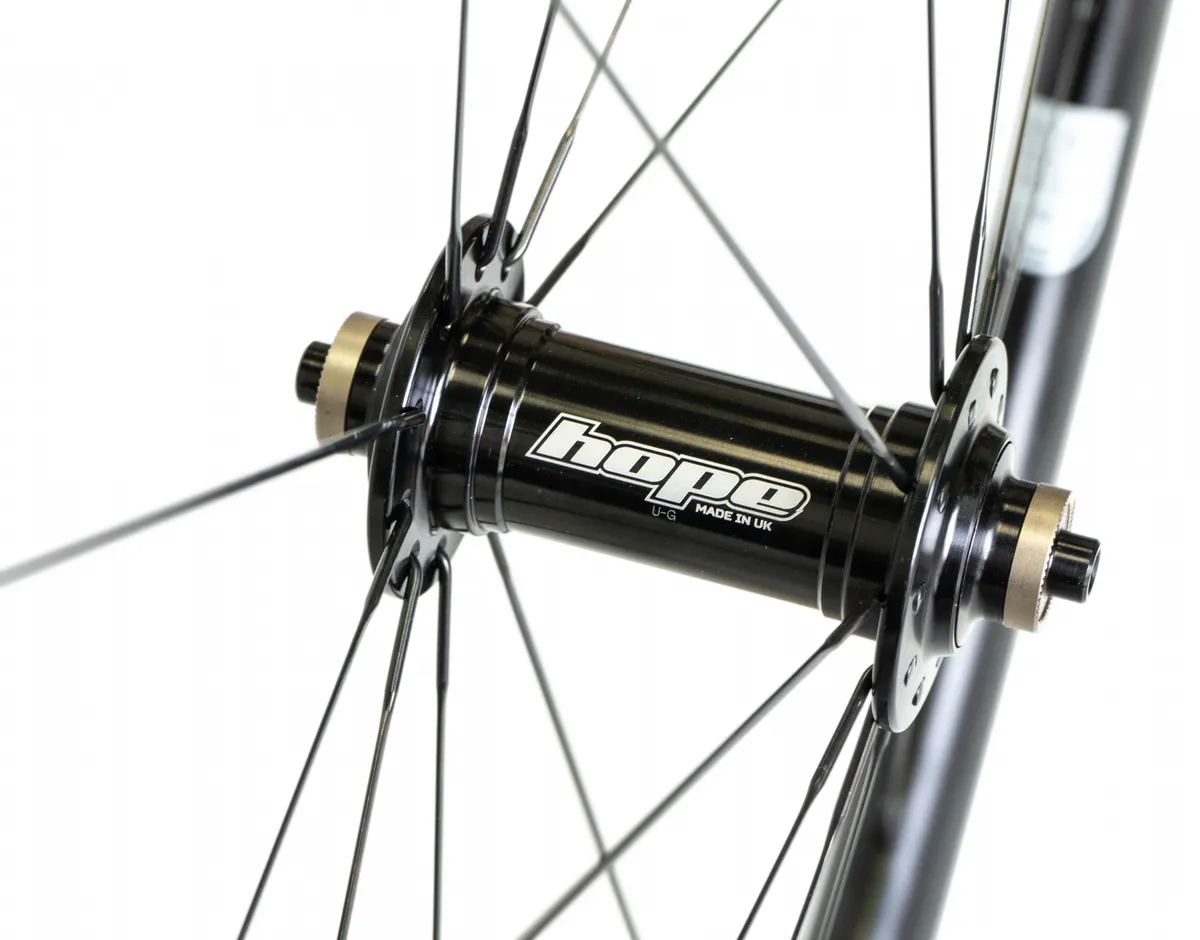
The Road / CX Bomber’s are a rim-brake wheelset suitable for touring, audax and all-road riding, and can accept between 700 x 25mm and 32mm rubber. The rims are DT Swiss RR411’s and can be paired with Bitex or Hope RS4 hubs, the latter adding another £100 to the total cost.
- £440
M Part Wheels Hybrid Front Wheel, Shimano Deore hub, Mavic A319 rim
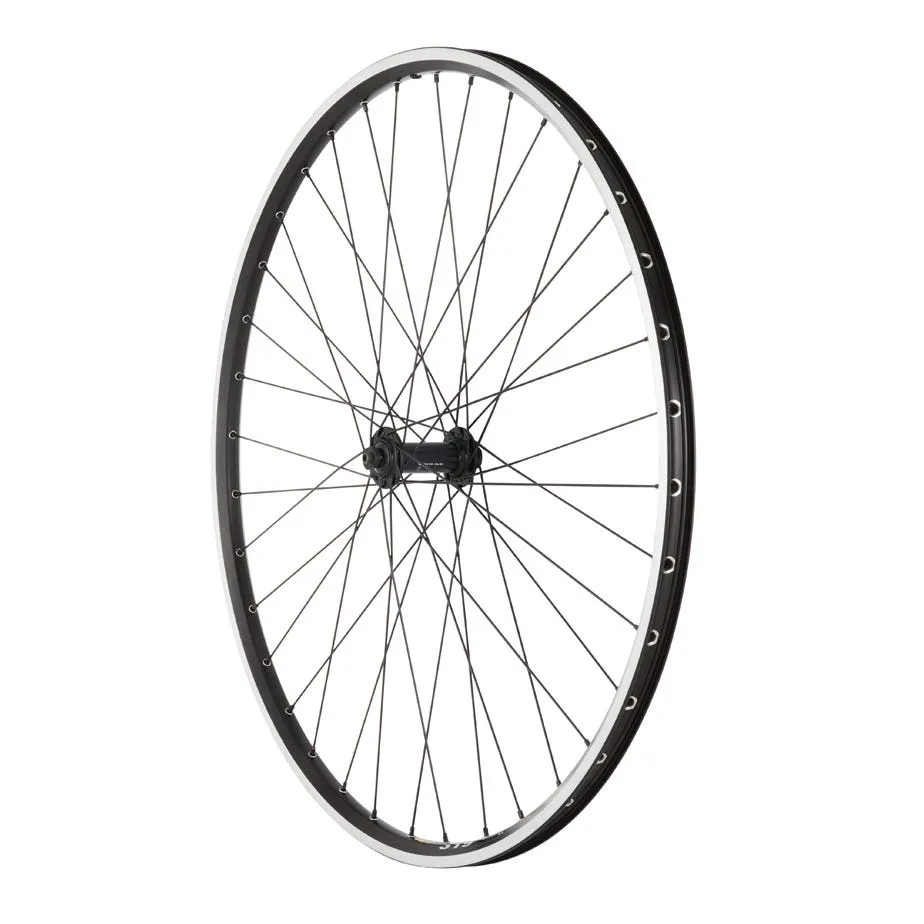
If you’d like to keep things cheap and cheerful, this M Part wheel is a good starting point. The Mavic A319 rim is laced to the Shimano Deore cup-and-cone hub with 36 plain-gauge DT Swiss stainless spokes in black.
- £89.99
Mavic Open Pro C rims on Shimano 105 hubs

This mid-range 700c wheelset sees a Mavic Open Pro C rim laced to Shimano’s cup-and-cone 105 hubs. 32 DT Competition double-butted spokes complete the build.
- £230.99
Velocity Aileron Road / CX Disc Brake wheelset

USA’s Velocity Aileron rims are paired with a dependable DT Swiss 350 hub. Velocity advises a 700 x 25mm to 40mm tyre range and you can choose to use either Sapim CX-Ray or Force spokes.
- £687.60
DT Swiss TK540 Touring
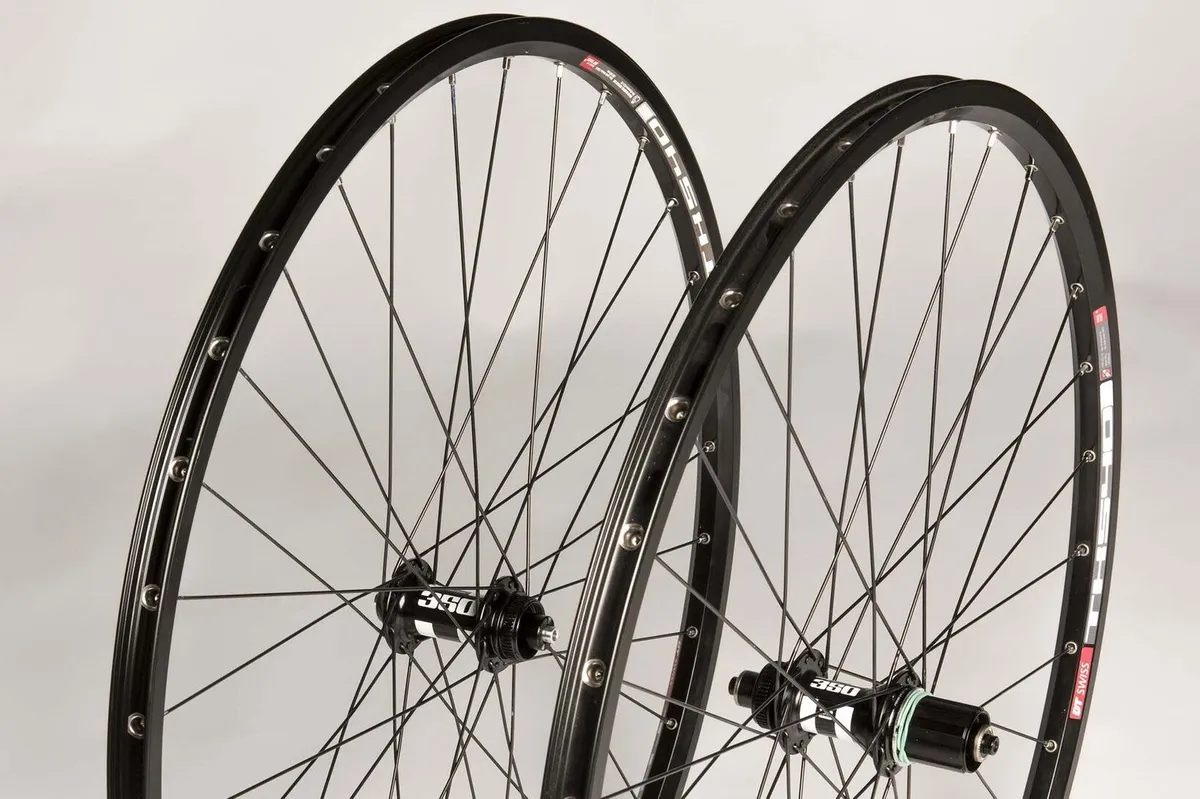
DT Swiss’ TK540 rims are laced to either a Miche Primato or Bitex BX103 hub with Sapim Force spokes. There are 32 spokes front and rear, although there is an option for 36 at the rear. The rims are not tubeless-compatible, but are available in a rim- or disc-brake option.
- £362
Hope 20Five Tubeless Disc

Although a stock option, Hope’s 20Five wheelset could also take on touring duty. Hope’s own rim is laced to its tried-and-tested Pro4 hub using Sapim Sprint J-bend spokes and is tubeless-compatible, once you’ve installed valves and rim tape.
- £425

